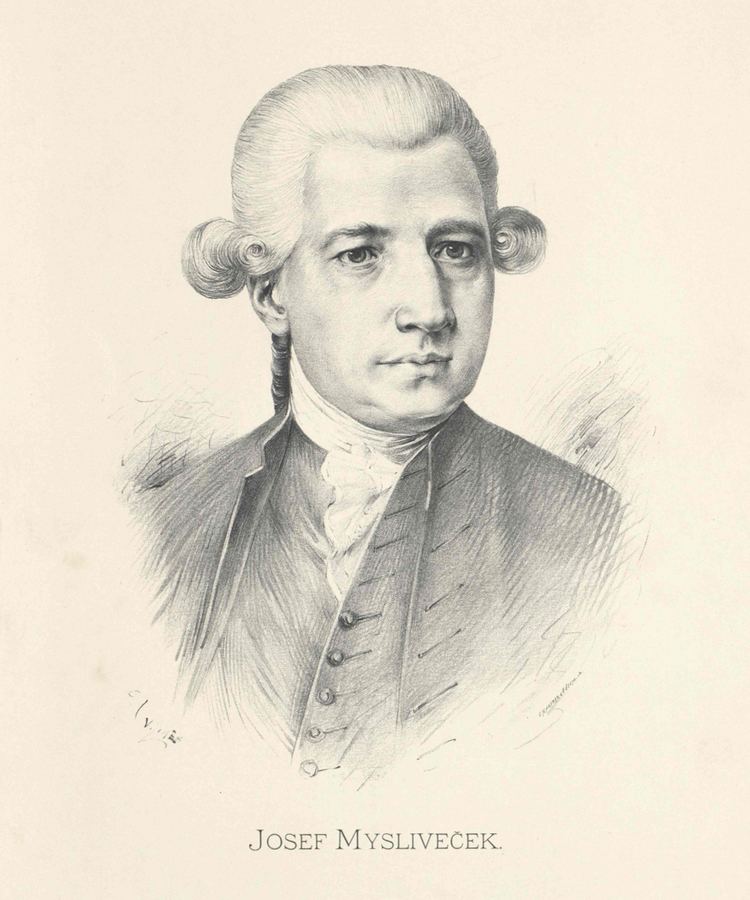Composer Josef Mysliveček Language Italian | Librettist Pietro Metastasio | |
 | ||
People also search for Demetrio, La Calliroe, Artaserse | ||
Demofoonte is an opera in three acts by the Czech composer Josef Mysliveček. It was the composer's first setting of this popular libretto by Metastasio first produced in 1733 (it was common in the second half of the eighteenth century for composers to set Metastasian texts two or more times over). This setting stays remarkably close to the original drama for its day (it was customary to alter Metastasian texts considerably so long after their original performances), but the role of Timante was augmented in order to highlight the talents of its interpreter, the distinguished male soprano Gaetano Guadagni. All of Mysliveček's operas are of the serious type in Italian referred to as opera seria.
Contents
Performance history
The opera was first performed at the Teatro San Benedetto in Venice on 17 January 1769. It was very successful when it appeared. Indeed, the composer's first biographer, František Martin Pelcl, claimed that Venetian nobles stood in line outside of the theater to applaud his talents. The role of Timante in this production was sung by the great castrato Gaetano Guadagni during the last portion of his long career. Mysliveček's second version of Demofoonte premiered at the Teatro San Carlo, Naples in 1775.
Connection with Mozart
The overture composed for the opera is the most interesting aspect of the production, since it was extravagantly admired by the young Wolfgang Amadeus Mozart. In a short note written to his sister from Milan on 22 December 1770, he urgently requested her to find out whether a copy of it was available in Salzburg. If not, he vowed to bring a copy back home with him. Mozart used the overture as a source of musical motives in his own compositions for years. There is no other attributable music not by Mozart to be found in the entire Mozart correspondence except for the notes of the beginning of the first violin part from this overture that were copied down by Mozart to help his sister identify it.
Synopsis
The Thracian king Demofoonte asks the oracle of Apollo how long the practice of the annual sacrifice of a virgin will continue. The answer is puzzling: "as long as the innocent usurper sits on the throne". The nobleman Matusio tries to protect his daughter Dircea from being sacrificed. He and Demofoonte are unaware that Dircea is secretly married to Timante, the son of Demofoonte and the heir to the throne. Demofonte wants Timante to marry Creusa, a princess of Phrygia. Timante's younger brother Cherinto is accompanying her to the kingdom of Thrace, however he falls in love with her. Meeting Creusa, Timante admits that he cannot marry her, but does not explain why.
Dircea has been caught while trying to flee the country and imprisoned, and Demofoonte orders the immediate sacrifice of Dircea. Timante tries to release her but with no success. He is also imprisoned. Creusa asks Demofoonte for mercy. The king releases Timante and Dircea, and Timante decides to give up the throne in favour of Cherinto.
Suddenly they find a letter revealing that Dircea is the daughter of Demofoonte, which makes Timante and Dircea brother and sister. Timante is in despair, and tries to avoid Dircea. However another letter reveals that Timante is the son of Matusio. Everybody is happy. The marriage of Timante and Dircea becomes legal, and Cherinto is the real crown prince and can marry Creusa. No more virgins are sacrificed, since Timante is no longer the "innocent usurper of the throne".
Vocal Set Pieces
Act I, scene 1 - Aria of Matusio, "O più non tremar non voglio"
Act I, scene 2 - Aria of Dircea, "In te spero o sposo amato"
Act I, scene 3 - Aria of Demofoonte, "Per lei fra l'armi"
Act I, scene 4 - Aria of Timante, "Sperai vicino al lido"
Act I, scene 7 - Aria of Creusa, "Non curo l'affetto"
Act I, scene 8 - Aria of Cherinto, "Balena in quel sembiante" [a non-Metastasian text]
Act I, scene 12 - Aria of Dircea, "Padre, perdona, o pene"
Act I, scene 14 - Accompanied recitative for Timante, "Infelice Dircea"
Act I, scene 14 - Cavatina of Timante, "Ah no, bell'idol mio"
Act I, scene 14 - Aria of Timante, "Che fiero tormento" [a non-Metastasian text]
Act II, scene 1 - Aria of Creusa, "Tu sai chi son tu sai"
Act II, scene 2 - Aria of Timante, "Prudente mi chiedi?"
Act II, scene 4 - Aria of Matusio, "Vado, ma d'una figlia" [a non-Metastasian text]
Act II, scene 6 - Aria of Dircea, "Se tutti i mali miei"
Act II, scene 7 - Aria of Cherinto, "No, non chiedo amate stelle"
Act II, scene 10 - Aria of Demofoonte, "Perfidi, già che in vita"
Act III, scene 1 - Aria of Adrasto, "Non odi consiglio?"
Act III, scene 4 - Accompanied recitative for Timante, "Misero me"
Act III, scene 5 - Duet for Dircea and Timante, "La destra ti chiedo"
Act III, scene 5 - Aria of Timante, "Misero pargoletto"
Act III, scene 7 - Aria of Dircea, "Che mai risponderti"
Act III, scene 11 - Chorus, "Par maggiore ogni diletto"
